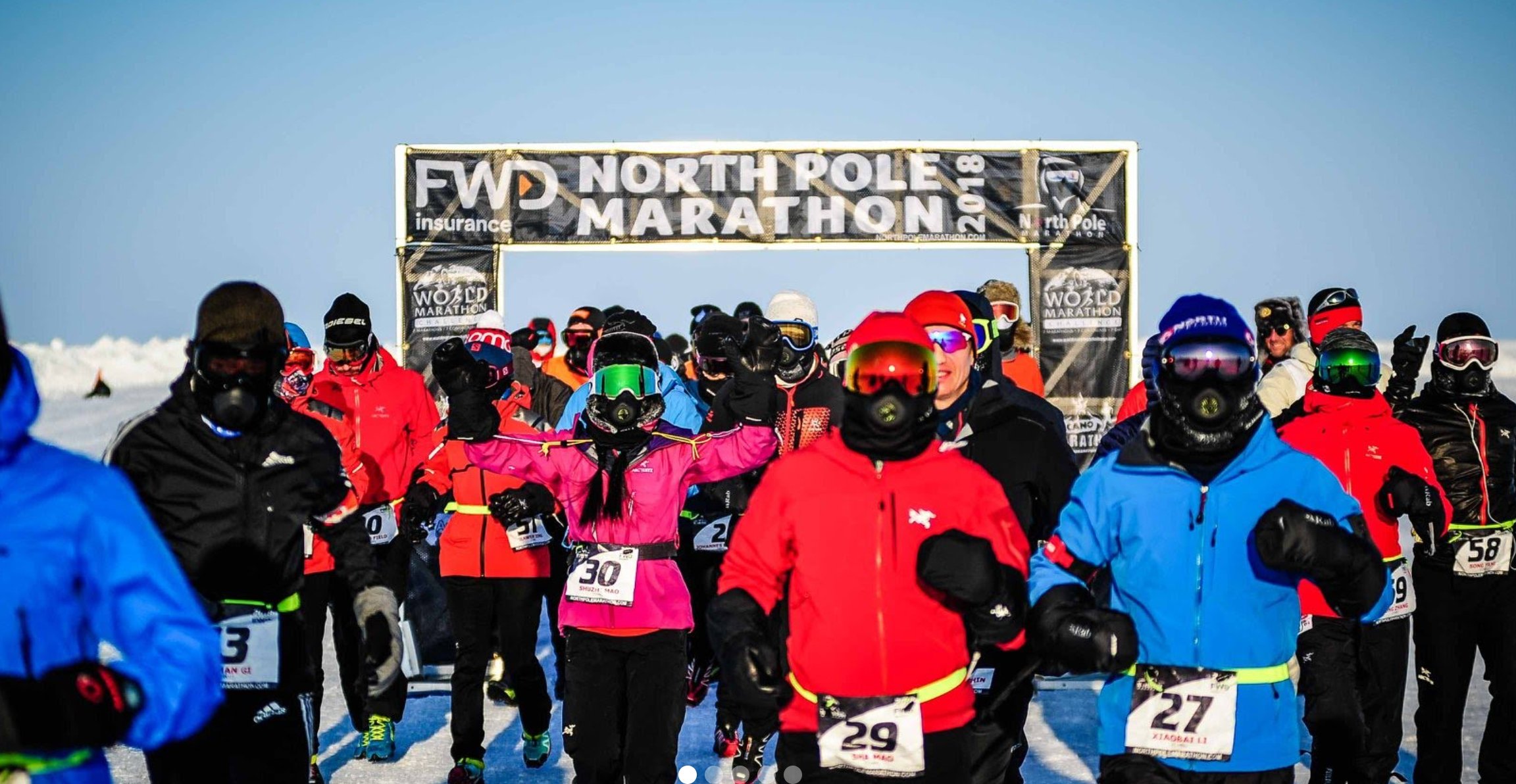Wednesday, we can watch the best of the best runners in the worst of the worst conditions in what seems to be the crazy race that starts running season on ESPN every year, The North Pole Marathon (aka The Coolest Marathon Ever…lol).
This is a most challenging funning event because it combines 26.2 miles with some extreme weather conditions—a race for only the most well-trained runners. As proof that this race is only for the most skilled runners, we read in the statement of responsibility that each runner has to sign before participating: “I understand that participating in physical activities in the North Pole area may put me at some risk of death, falling or being blown into the frigid waters and other perils. I also agree that the specific activity of running or walking in the North Pole vicinity may, in an extreme worst-case scenario, place me at risk of death from the frigid conditions as well as being lost in the Arctic due to poor weather or loss of communication as well as accident or illness, fully understanding that I am in a remote region devoid of many medical supplies and facilities.”
Marathon runners train for years to run races, even without any challenges like The North Pole Marathon adds. Marathoners usually have built up to longer foot races, starting with 5Ks and half marathons first. Full marathoners usually take between 16 and 20 weeks to train for a race. As one builds up to the race, the heart, muscles and mind need to be conditioned for the exertion expected, so following a strict training plan under the direction of a doctor and/or trainer is absolutely necessary.
Want to Train for a Marathon? Here’s Some Suggestions:
Marathon trainers write that beginning marathoners should aim to build their weekly mileage up to 50 miles over the four months leading up to race day. Three-to-five runs per week is sufficient. The vast majority of these runs should be done at a relaxed pace. Exercises like jump squats, box jumps, and “plyometric” pushups are perfect since they still activate muscles and joints and help you maintain strength while not putting wear and tear on the muscular system. These body-weight plyometrics can also serve another function of improving running form. For more on plyometric training exercise, we suggest this article from Self: https://www.self.com/story/a-10-minute-fat-burning-plyometric-workout-you-can-do-at-home.
Like almost any other sport, running doesn’t come without risk, but The New England Journal of Medicine reported that death while running a half or full-marathon is extremely rare. During the decade of 2000-2010, only 42 runners out of nearly 11 million died of cardiac arrest (when the heart stops working). That equates to an extremely small percentage of 0.00039 percent.
Hyponatremia (low blood sodium) and heat-related illness can be life-threatening as well, but again, are extremely rare. Precautions can be taken to avoid all of these risks. Here's how:
Step 1: Get a Check-Up
Starting a new cardiovascular program should always start with a visit to your doctor first. Know your physical limits and/or what you can do, by first visiting your doctor.
Step 2: Hydrate
And, that’s not talking about marathon runners, or even runners at all…that’s everyone. It takes only a 2% loss of total water content for your body to start feeling thirsty. Once you’re at this point your body is already in a state of dehydration. Hydration training is a thing when you are runner. Your trainer can help you with this.
Step 3: Pay Attention the Weather Forecast
For the most part, marathons are held early in the morning to avoid the heat of the day. Extreme marathons, like The North Pole Marathon, add weather as an additional challenge which requires even more training – weather training.
Step 4: Train, Train...and Train Some More
Preparing for a marathon is as important, if not more so, than running one. Running 26.2 miles takes many weeks of training as does proper nutrition and hydrating training. This is true for each of your runs. Is a marathon hard on your body? It certainly is so proper training is critical.
Marathoning also does pose risks to bones, muscles, and joints if you don’t train smart, too. Injuries can happen to runners who run too many miles, too fast, and too soon. You cannot safely go from running 15 miles a week to 40 the next. You will hurt yourself, and likely put an end to your marathon training. A good rule of thumb for ramping up the mileage is adding no more than 10% distance each week.
Marathoning is a challenge even in the best of conditions. When you run a marathon, you run against distance…not the clock or other runners. They say, "when running a marathon, you can learn everything you ever wanted to know about yourself in 26.2 miles!" We bet you can!
For more on The North Pole Marathon, visit https://www.npmarathon.com/.









